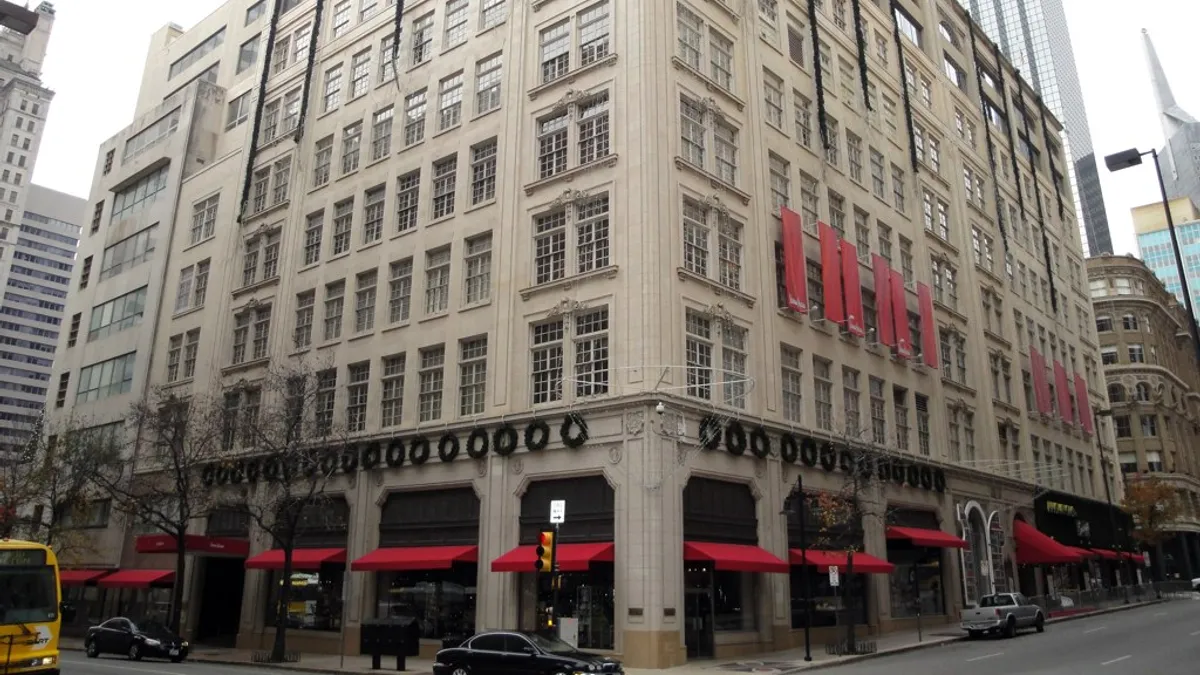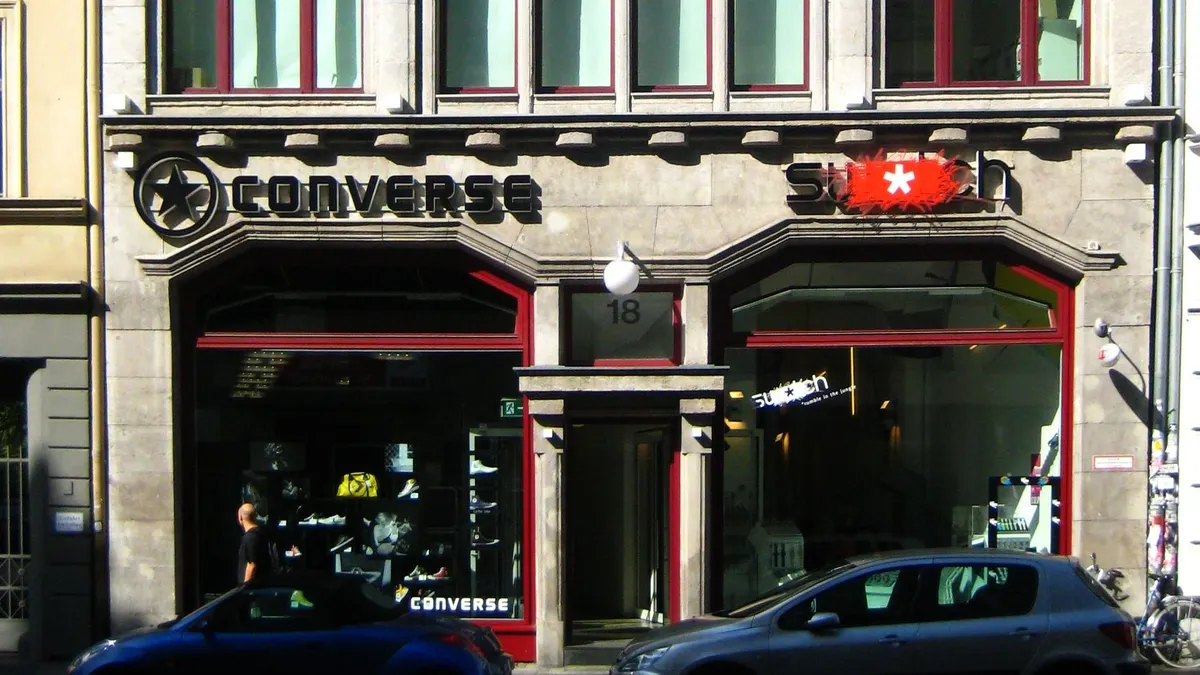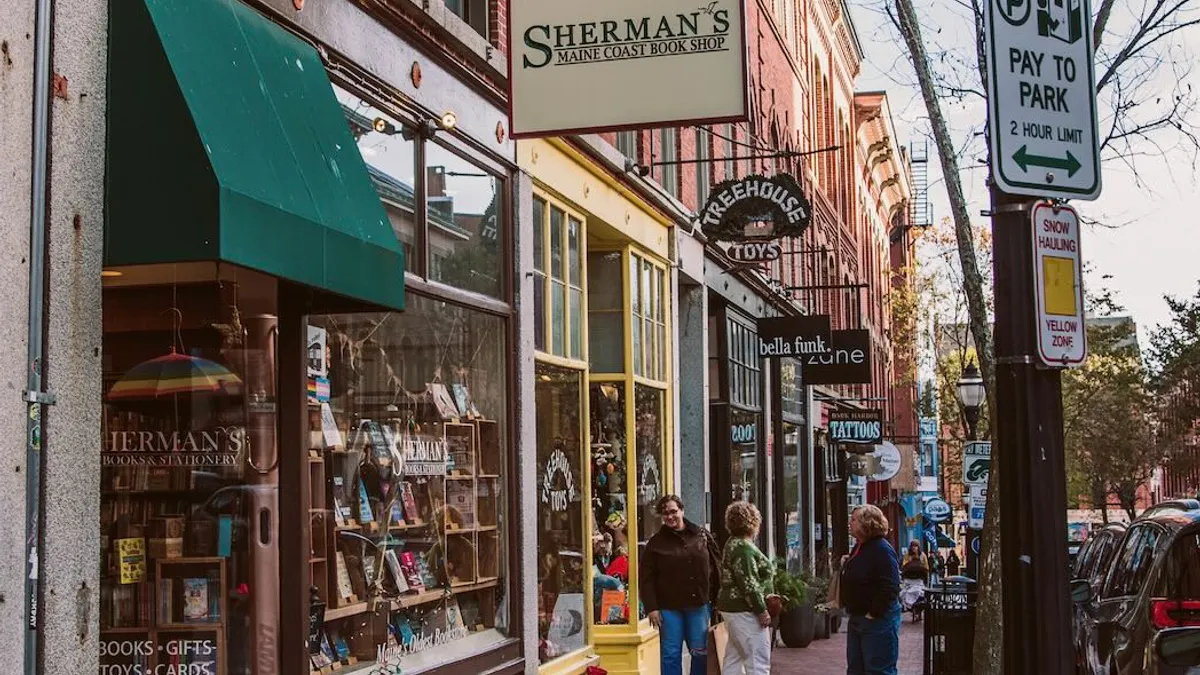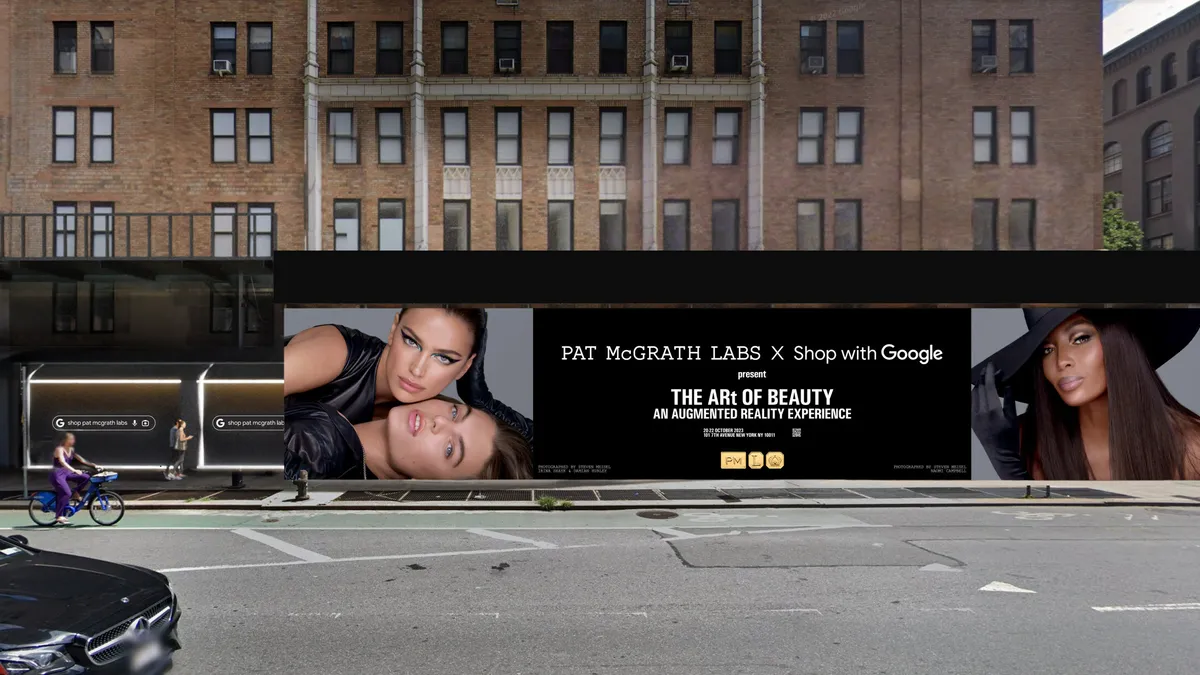In bankruptcy documents filed last week, Neiman Marcus Group came prepared with plans — already agreed to by shareholders and major creditors — for an autumn exit, free of some $4 billion in debt and ready to embark on a comeback.
For all that work, however, the question remains whether the luxury department store retailer can return to its former glory, which sprang from a high regard for fashion and personal service.
"Neiman always served the high end in the Texas market, and traded in New York for years only as Bergdorf Goodman, in the theory that New Yorkers are very provincial — like never changing the name of Yankee Stadium, or how Duane Reade is 'Walgreens' everywhere else," Alan Behr, fashion industry attorney and partner at Phillips Nizer, told Retail Dive, noting that the company opened a "Neiman Marcus" banner at Hudson Yards only last year.
The company acquired Bergdorf in 1972, and now runs 67 stores across the U.S., including both department store names, plus the Horchow e-commerce site and off-price Last Call stores, according to one bankruptcy document.
What Neiman Marcus does next will be another chapter in what has become a dark saga for department stores, with wider implications, according to Behr. "Like Goldwaters, I. Magnin, Saks, they're part of the American retail story," he said. "The higher-end places are like a city's luxury hotels, they're validation of a city's sophistication."
"Department stores used to have private label, it was a big thing, and that started American designers."

Alan Behr
Partner, Phillips Nizer
Retailers like Neiman and Bergdorf were once highly influential in American fashion, Behr also said. "Department stores used to have private label, it was a big thing, and that started American designers," he said by phone. "The merchandise was all different, now it’s all the same. So what's distinguishes them now is service."
The company details many of those historical fashion bona fides in its bankruptcy filing. In the 1930s, for example, Neiman Marcus was the first retailer outside of New York City to buy ads in Vogue and Harper’s Bazaar, launching its famous Christmas catalog late in the decade, Chief Restructuring Officer Mark Weinsten noted in court papers.
The retailer viewed fashion as a form of art, and developed an award, "the Oscar of the fashion industry," whose winners included Coco Chanel and Yves Saint Laurent. Its flagship featured pieces from the Neiman Marcus Art Collection, according to Weinsten. "This is not a store. It is too spacious and colorful," he cites from an early Dallas Times Herald description of the space. "It is something with beautiful clothing in it. But it is not a store."
It's the kind of attitude being touted now (outside of the pandemic) as the salvation of physical retail — the store as a "medium," perhaps best exemplified by Nike. Behr calls it "the entertainment value of fashion, which is not to be underplayed. It’s psychological."
As is top-notch service, which at Neiman has been a priority from the start. The retailer opened in 1907 with one store in Dallas, founded by Herbert Marcus and his sister, Carrie Marcus Neiman, trading in "ready-made, high-quality clothes for women, as well as exceptional service," according to the Texas State Historical Association.
And there was cuisine. "The Zodiac restaurant was very chic and famous," Bruce Kopytek, who has written books about department store history and maintains an online "Department Store Museum," told Retail Dive in an email. "On nights the store was open late, they advertised a dinner buffet with the menu in the paper."
It's a familiar department store trajectory, a merchant becoming integral to a community and cherished on a personal level. Documents and newspaper clippings over the years "show how in touch the store was with individual customers before it became a large chain," Kopytek said. "It was all so personal and elegant. They really knew what they were doing — the genius of a small group of dedicated merchants under a good leader."
That original small group and good leader are long gone. Like Nordstrom, which has also held on to service as a differentiator, Neiman Marcus remained under at least partial family control into the 21st century. The last Marcus involved in the company, Stanley, was the founder's son and a man of the world, the man, according to The New York Times, "who brought Paris to Dallas."
Unlike at Nordstrom, however — where the founder's great-grandsons and their cousins still hold key executive positions, including CEO — at Neiman, the family let go. Stanley Marcus died in 2002 at the age of 96, before the first of a couple of leveraged buyouts, one in 2005 and the next in 2013. Both helped to shovel onto the business the debt the company is digging out of now, nearly equal to its $5 billion or so in annual revenue.
The company's liabilities were already interfering with plans to go public and, according to some analysts, its ability to innovate. Then, a pandemic hit.
"In normal circumstances, the debt burden prevented it from turning a profit and restricted its ability to invest and evolve in a time of immense change in retail," GlobalData Retail Managing Director Neil Saunders said in emailed comments. "The coronavirus crisis has severely exacerbated these problems as sales have dwindled and Neiman Marcus is struggling to pay the interest and capital on what it owes."
But Neiman Marcus Chief Innovation Officer Katie Mullen says that the retailer has not been standing still, working for the last two years or so (since her arrival in late 2018) on strengthening its relationship with customers on and offline.
"We are extremely fortunate because we have this longstanding relationship with our customers, we're really sitting at the intersection of the future and what’s most valuable from our past," she told Retail Dive by phone. "Because we have this rich history to build off of to enable them to shop any time, anywhere but in a really high-touch service model. Some are technological, some are human capabilities, but it's all about how do we strengthen that human connection."
That has scaled quickly, she said, and the results are coming in handy during the pandemic. A pilot with two virtual stylists ramped up to about 60 a year ago, and now the company employs 3,500 sales associates who use digital tools to curate looks, based both on personal interaction with a customer and information from past purchases and searches. "The sales associate can see what the data can see and the data can see what the sales associate sees," Mullen said. "We don’t envision a world where it’s one or the other. Luxury is always about the interpersonal dynamics and the relationship with the customer. It's not for us at all that automation or AI will do all the work."
Still, once it exits bankruptcy, the retailer has its work cut out for it, on all channels. In its filing, Neiman boasts of operating "the largest luxury e-commerce platform in the world," pointing out that more than 30% of annual revenue is from online sales. However, the company remains overly reliant on large physical stores in malls, according to RevTrax CEO Jonathan Treiber. Plus, luxury retail is uncharacteristically vulnerable right now, with discretionary spending down during the pandemic, he said.
Neiman Marcus and Bergdorf enjoy fierce loyalty from high-spending customers. The company makes 40% of its sales from those two businesses, from customers who spend $10,000 or more each, annually, with an average annual spend of $50,000, the company said in its Chapter 11 document. One way to boost that even further would be to market to younger customers, as Tiffany has, Saunders said.
But that may be hard to do, or even sustain, considering that, after declining by about 25% in the first quarter, the global luxury market is expected to slow even further in the second, which could lead to a contraction of 20% to 35% for the year, according to a report last week from Bain and Co.
Mullen pushed back on that, however, saying that the company is successfully marketing to millennials and "young Gen X," and isn't overstored compared to other department stores. "Because that’s the customer sweet spot," she said. "She’s got money and she’s got taste and she‘s willing to invest in her appearance."
In fact, she pushed back on the notion that Neiman Marcus or Bergdorf Goodman are department stores at all anymore. "'Department store' has a certain set of connotations," she said, noting how Sears sells both tires and pajamas. "That's fundamentally about convenience. What we're about is not convenience. We offer convenience, of course, but what we offer is the ease of getting what they want any time they want, any way they want. We just had a customer buy a $200,000 pair of earrings remotely. That's a very different business model than the traffic-and-conversion business."
Department store or not, any retailer still standing, however precariously, after 113 years in business has survived a lot. In Neiman Marcus's case, that includes depression, recessions, wartime and all manner of technological, societal and fashion changes. But a particularly intense level of uncertainty surrounds the pandemic and its aftermath, observers say.
"Who knows when this crisis will abate and when it eventually does what kind of new normal will we be facing," Mark Cohen, director of retail studies at Columbia University's Graduate School of Business, told Retail Dive in an email. "Many of the luxury houses which got killed in the 2008 recession took years and years to recover to their 2007 volumes. Unfortunately, the 2008 recession pales in comparison to what is happening now."
"Will Neiman Marcus have an interested and capable customer on the other side of all of this?" he said. "Who knows that either."




















